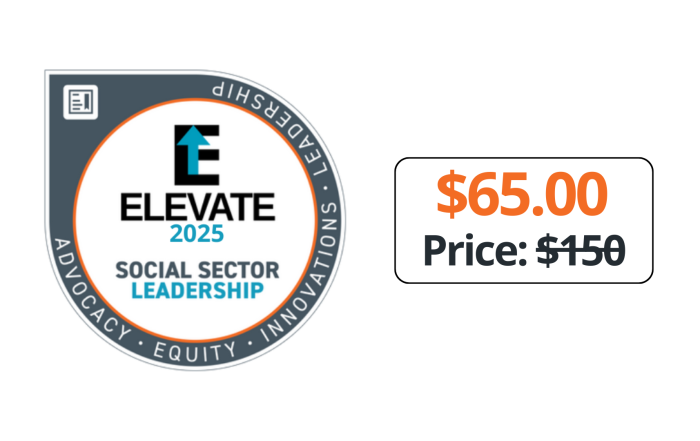As a dedicated nonprofit professional, you understand the critical role of continuous learning in the field. The nonprofit sector is dynamic, shaped by technological advancements, ever-evolving trends, and shifts in marketing and public relations strategies. If you’re not learning in the field, you’re likely falling behind. This is where nonprofit professional development comes in.
Consider this scenario: Have you ever observed a teacher, parent, or grandparent adapting to new technology? Perhaps you’ve witnessed them struggle to navigate the latest iPhone app or maybe they asked for help to download new software on their computer. Adapting to these rapidly advancing fields is challenging!
However, while individuals may find learning in these areas difficult, nonprofit organizations have no excuse to halt their learning journey. Whether it’s embracing cutting-edge technology or staying ahead of the latest trends, someone at your organization can guide you. Failing to prioritize continuous learning means missing out on valuable insights that could propel your mission forward.
Providing opportunities to learn is a strategy nonprofits often overlook due to limited funding. Yet, when you allocate resources effectively, you empower your team members to enhance their skills by participating in nonprofit professional development.
But how can you encourage their learning?
To help you answer this question, we’ve compiled our favorite (and affordable) professional development resources that you can use to help your nonprofit staff continue their training. We’ve split these resources into the following categories:
After we’ve provided our recommendations, we’ll dive a little deeper into the advantages that you’ll find when you invest properly in nonprofit professional development opportunities.
Without further ado, let’s get started.

Online Resources for Nonprofit Professional Development
Our Favorite Resource: Leaderosity Learning Library
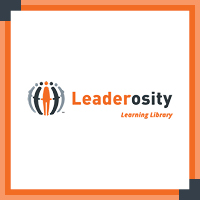
The Leaderosity Library provides online courses that guide nonprofit professionals through a variety of subjects within the sector. This flexibility allows learners to access and progress through courses at their own pace, from any location, ensuring that education fits seamlessly into their busy schedules.
With a course catalog that’s regularly updated, the library guarantees the most current insights into nonprofit trends and practices, empowering professionals with the knowledge they need to drive their organization’s mission forward.
Some of the many course options you can find include:
- Designing Nonprofit Programs: E Certificate
- Coaching as a Leadership Tool: E Certificate
- Effective Staff Supervision: E Certificate
- Leaders for Equity & Social Justice: E Certificate
- Risk Leadership: Inspiring Teams to Embrace and Manage Risk
The best part? This resource is incredibly affordable at only $50 per course.
Certified Nonprofit Professional (CNP) Credential Program
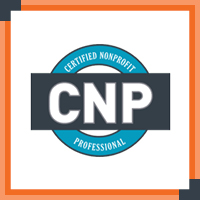
The Certified Nonprofit Professional (CNP) program is the only nationally recognized credential in nonprofit management. This program is an excellent advancement opportunity for those looking to solidify their professional credibility and continue learning in the nonprofit sector.
Not only does the program provide learning opportunities, but it also allows you to network with other nonprofit professionals, attend the Nonprofit Leadership Alliance’s annual ELEVATE conference, and become certified in the sector for life.
Nonprofit Resource Library
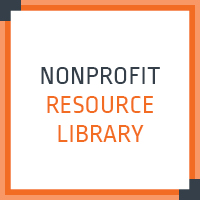
If you’re interested in reading blog articles, reports, videos, and other resources focused on nonprofit sector trends, diversity, fundraising, learning opportunities, and remote work, The Alliance’s Nonprofit Resource Library is the best option for you to continue learning.
This resource is especially helpful if you have specific questions in the sector and want to do some spot learning rather than cover a complete course. You’ll find plenty of articles, so you can learn about the subjects that most interest you.
- Employee Turnover Calculator
- Getting Started With AI
- Busting the Overhead Myth
- 3 Nonprofit Tips to Secure Effective Corporate Partnerships
Elevate Virtual Conference
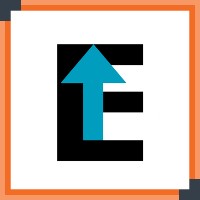
Virtual conferences are incredible opportunities for professionals to learn from others, network, ask questions, and share their own experiences. Elevate is an annual conference specifically for nonprofit sector leaders, designed to provide information about workforce trends, leadership, and advocacy for nonprofits.
At Elevate, you’ll experience the convenience and safety of accessing high-quality conference materials from your home. This virtual gathering is a testament to the adaptability and resilience of the nonprofit community in the digital age.
Hosted by seasoned experts at the Nonprofit Leadership Alliance and Association of Certified Nonprofit Professionals, Elevate promises a lineup of speakers who are thought leaders in the sector. You’ll be part of live sessions that spark inspiration, participate in discussion boards that foster community, and gain insights that could transform your approach to nonprofit leadership.
Tips to Leverage Online Resources
Carefully consider what it is you’re trying to accomplish when you invest in online resources. There are plenty of blogs and online articles that you can read for free (like those offered in the Resource Library). Generally, these are great opportunities for spot learning. If you have a specific question, it can generally be answered in a concise blog post or report.
However, if you’re looking for a more structured learning environment, you’ll benefit from nonprofit courses that are planned out and offer diverse and engaging learning materials. From videos to dynamic and interactive content, you’ll have a more immersive experience that promotes deeper learning opportunities.
After you’ve determined what it is you want to get out of the experience, consider how much time and funding you have available to learn.
You may ask yourself questions like:
- Do I need to answer a pressing question today? Or do I have a few weeks or months to dive deeper into the subject as a whole?
- Am I looking to enhance only my professional development? Or would my entire team benefit from additional training?
- What is my nonprofit’s budget for providing these opportunities? Or am I making a personal investment and paying out of pocket?
By asking yourself these questions, you’ll find the online learning resource perfect for meeting your specific needs. Consider all options carefully and make an investment that will make a long-lasting impact.

Books for Nonprofit Professional Development
The Jossey-Bass Handbook of Nonprofit Leadership and Management
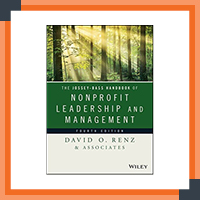
This handbook that David O. Renz wrote is the fourth edition of the bestselling nonprofit management reference and text called the “Big Green Book.”
Based on updated research, theory, and experience, this comprehensive edition offers practical advice on managing nonprofit organizations and addresses key aspects such as board development, strategic planning, lobbying, marketing, fundraising, volunteer management, financial management, risk management, and compensation and benefits.
Robots Make Bad Fundraisers
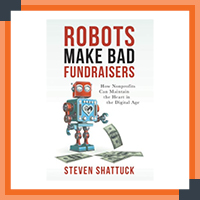
Written by Steven Shattuck, the Chief Engagement Officer at Bloomerang, Robots Make Bad Fundraisers discusses tried-and-true practices to develop relationships with your nonprofit’s supporters. Shattuck touches on segmentation in marketing, creating strong relationship foundations, and adding a personal touch to your outreach.
The book addresses the technological advancements in the nonprofit field, as well as how those advancements have done little to improve donor relations and retention. It lists steps you can take to leverage technology to improve productivity, but maintain the human element in donor communications.
Nonprofit Management: Nonprofit Principles and Practice
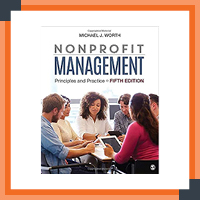
Michael J. Worth’s student-friendly best-seller, Nonprofit Management: Principles and Practice, provides a broad, insightful overview of key topics affecting the governance and management of nonprofit organizations.
Worth covers the scope and structure of the nonprofit sector, leadership of nonprofits, managing the nonprofit organization, fundraising, earned income strategies, financial management, nonprofit lobbying and advocacy, managing international and global organizations, social entrepreneurship, and social innovation. Written specifically for students, this applied text balances research, theory, and practitioner literature, and is packed with current cases, timely examples, and accurate data.
Nonprofit Management 101
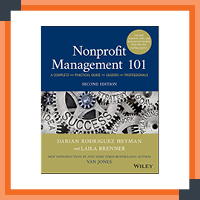
This book, edited by Darian Rodriguez Heyman, provides nonprofit professionals with the conceptual frameworks, practical knowledge, and concise guidance needed to succeed in the social sector.
Designed as a handbook, the book is filled with sage advice and insights from a variety of trusted experts. The advice is written to help nonprofit professionals prepare to achieve their organizational and personal goals and better understand what they need to do to lead, support, and grow an effective organization.
Nonprofit Management 101 was written to inspire nonprofit professionals to lead the social good sector to greater success. It’s the perfect solution to help your management team to go back to the basics and build a stronger foundation for growing your organization.
Tips to Leverage Book Resources
While you’re welcome to read these books independently, we recommend that you organize a group to read and discuss the points of the books regularly. This acts as a book club within your organization and you can make it optional or mandatory depending on the book you choose and your goals for your team.
The reason we recommend starting a book club is because it will help your team to better absorb the points of each book.
For instance, if you read about the different types of segments you can create in a donor database, you can collaborate on how the information plays into your work. You can discuss as a group how the information applies to your own database, which segments your particular audience will respond most positively to, and what the best plan will be moving forward with your new information.
In addition to starting book clubs, you may use your book resources to:
- Mark chapters that will be particularly useful for certain positions at your organization. Then, lend the book to those individuals and ask them to read through it to make informed strategic adjustments in your organization’s management.
- Incorporate certain chapters into onboarding or coaching within your nonprofit. Existing training programs can be enhanced by including some additional facts and context if you find particularly relevant books or chapters.
No matter how you leverage books within your organization, whether to build out an existing training program or to develop a new one from scratch, it’s a great way to encourage your staff to continue learning.

Journals for Nonprofit Professional Development
Nonprofit Quarterly
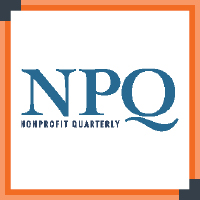
Nonprofit Quarterly is a regular magazine that covers the latest news, trends, and policies regarding philanthropic causes. The magazine is written by nonprofit experts who conduct research and report back to the readers in the form of comprehensive and approachable articles.
In addition to signing up for the Nonprofit Quarterly publication, you can gain access to their archive of information, webinars, and other resources to conduct research on interesting topics through their Leading Edge Membership.
Nonprofit and Voluntary Sector Quarterly
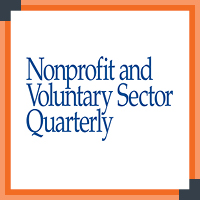
Nonprofit and Voluntary Sector Quarterly provides a forum for researchers from around the world to publish timely articles from a variety of disciplinary perspectives. The journal is published biweekly and provides peer-reviewed articles that cover various fields of research within the nonprofit field.
The data and expert analyses help professionals like yourself to better understand the direction the sector is heading in and its influence on society.
Nonprofit Management and Leadership
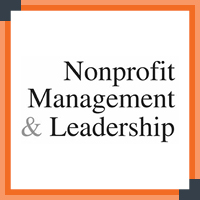
Sponsored by the Jack, Joseph and Morton Mandel School of Applied Social Sciences, Nonprofit Management & Leadership is a quarterly peer-reviewed journal. This journal covers the latest in nonprofit management, governance, and leadership for private nonprofit organizations.
The readership for this journal tends to be university academics and staff, organizational leaders, executives, and development professionals.
Tips to Leverage Journal Resources
While you may remember reading academic journals in school, most individuals don’t use them in their daily lives. However, keeping up with journals is a great way to stay up to date with the latest research in the sector. They provide a great opportunity to encourage ongoing training. Nonprofit professional development doesn’t necessarily need a firm beginning and end. Rather, it’s a process that should be progressively updated.
This makes regular journals a great option because you know that you’ll get the latest information and research in the newest publication.
We recommend leveraging journals as a part of your nonprofit professional development by:
- Sorting and categorizing valuable journal articles into categories so they can be leveraged in specific professional development programs.
- Encourage reading and discussion of articles from the latest issues. You may draw on examples from your own organization that also back up the latest research and find opportunities for improvement based on it.
- Adding a journal subscription as a staff benefit for working with your organization. This provides the opportunity for staff to subscribe and read the latest research without the pressure of the subscription fee.
The only downside with journal subscriptions is that some can be difficult to read due to their academic tone and research complexity. Be sure to consider carefully which journal will be the most accessible for you and others at your organization to read before you invest in one.

Advantages of Nonprofit Professional Development Opportunities
If you’ve never offered or taken advantage of professional development opportunities, you may be a little hesitant to invest in any of these solutions. Skeptics out there might be asking, “what will this investment actually accomplish?”
Well, there are a lot of advantages that accompany nonprofit professional development, some of which you may not have initially expected. Here are just some of the many benefits:
- Providing development opportunities for staff leads to increased employee satisfaction. In fact, 91% of Gen Z employees cite professional development as an important factor when choosing an employer. Therefore, it can help you avoid costly turnover while motivating your staff.
- Nonprofit professional development increases organizational efficiency. Greater efficiency creates a greater impact per resource spent toward your mission, leading to overall growth.
- Continuous training and development result in a greater social impact. As your organization creates stronger employees and individuals in the field, you’re developing social impact leaders. Whether the leaders make a difference as a part of your organization or as a part of another, their dedication to the nonprofit field makes the world a better place.
Here at the Nonprofit Leadership Alliance, we understand the importance of developing leaders in the nonprofit sector. That’s why we offer our own nonprofit professional development resources for organizations and individuals like yourself. It’s our goal to provide these opportunities to help create a better world through education.
We designed resources like the Leaderosity Library and the CNP program to be approachable development opportunities that any and all nonprofit professionals can benefit from. Understandably, though, you should conduct research concerning the programs yourself. Therefore, we’ve provided additional research resources regarding nonprofit professional development below for your convenience:
- Employee Turnover Calculator. We mentioned that professional development opportunities boost engagement and retention rates for staff. See how much you could save with a lower employee turnover rate.
- Learning Management System for Nonprofits: A Complete Guide. If your organization already has courses available for employees, constituents, members, or volunteers, learn about how the right LMS can create a better learning experience.
- Leaderosity Library. As our favorite nonprofit professional development resource, we highly recommend that you take a look at all of the features, courses, and opportunities that come along with the Leaderosity Learning Library.
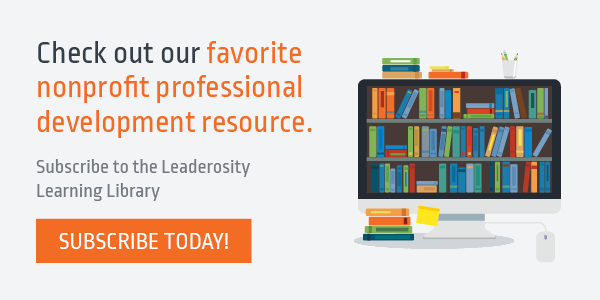
Did you enjoy this story?
Get nonprofit tips and tools delivered right to your inbox by joining The Nonprofit Leadership Alliance Newsletter. Our bimonthly newsletter will make sure you know what’s happening with our network of social sector leaders.
Elevate 2025 On Demand: The Nonprofit Conference Everyone’s Talking About
Couldn’t make it to the Nonprofit Leadership Alliance’s annual Elevate Conference on February 25-27th, 2025? Now, you don’t have to miss out! Elevate 2025 On Demand is officially live and ready for you to stream
Thinking About Crowdfunding? 4 Things to Know First
While nonprofits can and should buck the overhead myth, there’s still some logic in it. After all, what charitable organization doesn’t want to minimize costs and devote more resources to its mission? Your fundraisers should
4 Key Components of a Successful Online Fundraising Store
From door-to-door sales to tedious event planning, traditional fundraising can feel exhausting and time-consuming. While those methods work for some organizations, digital-first strategies can cut complicated logistics and open your fundraiser up to non-local supporters.

